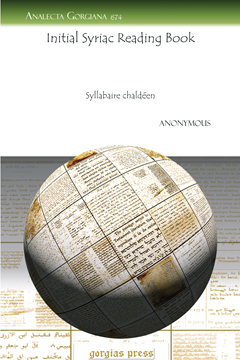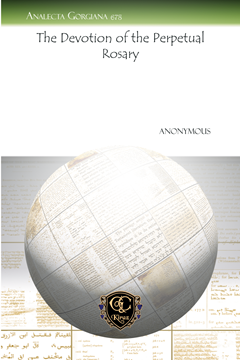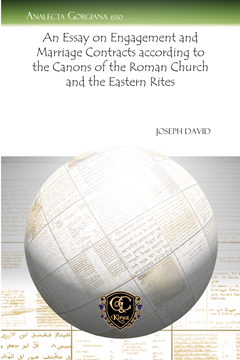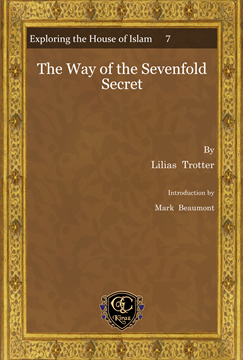Reading Book for Urmia Aramaic
By Anonymous
Series: Analecta Gorgiana 671
ISBN: 978-1-61719-621-8
This reading or practice book for this Aramaic dialect was originally published at the Catholic Press of Urmia. It progresses from simple letter forms on to words, phrases, sentences, and then short narratives.
$45.00 (USD)
Catholic Catechism in Urmia Aramaic
By Anonymous
Series: Analecta Gorgiana 672
ISBN: 978-1-61719-622-5
This catechism in the Aramaic dialect of Urmia, originally published at the Lazarist Press there, provides questions and answers regarding the Catholic faith in that language.
$52.00 (USD)
Catholic Catechism in the Mosul Dialect of Aramaic (Sureth)
Petit catéchisme en langue chaldéenne vulgaire
By Anonymous
Series: Analecta Gorgiana 673
ISBN: 978-1-61719-623-2
This is the second printing of a Catholic catechism in the Aramaic dialect of Mosul, originally published at the Dominican Press there.
$40.00 (USD)
Initial Syriac Reading Book
Syllabaire chaldéen
By Anonymous
Series: Analecta Gorgiana 674
ISBN: 978-1-61719-624-9
This small practice book for learning to read Syriac went through several printings at the Dominican Press in Mosul. It guides the reader through letter forms into words and then some practice reading passages.
$42.00 (USD)
An Arabic Catechism on Biblical History
Abrégé d'histoire sainte
By Anonymous
Series: Analecta Gorgiana 675
ISBN: 978-1-61719-625-6
This volume, in Arabic, provides an overview of biblical history in the form of questions and answers divided into chapters by theme.
$49.00 (USD)
Technologies of Medieval Song
The Lawrence J. Schoenberg Symposium on Manuscript Studies in the Digital Age; 2010 Symposium
Edited by Lynn Ransom & Emma Dillon
ISBN: 978-1-61719-056-8
This volume gathers six essays from papers presented at the 3rd Annual Lawrence J. Schoenberg Symposium on November 19-20, 2010. The essays explore both the technology of inscribed musical expression in the Middle Ages—especially in regard to notation—and the role that modern digital technologies play in facilitating the study of music manuscripts today. As the manuscript evidence shows, medieval music as written text was both expressive and prescriptive in shaping music-making practices, performance, and reception.
$127.00 (USD)
Praying the Rosary and Hearing the Mass
Méthode facile pour réciter le Très-saint Rosaire
By Anonymous
Series: Analecta Gorgiana 677
ISBN: 978-1-61719-628-7
This manual, in Arabic and originally published at the Dominican Press in Mosul, contains the complete cycle of praying the Rosary, together with a guide for hearing the Mass.
$45.00 (USD)
The Devotion of the Perpetual Rosary
By Anonymous
Series: Analecta Gorgiana 678
ISBN: 978-1-61719-629-4
This volume in Arabic, originally printed at the Dominican Press in Mosul, contains chapters on the origin of Rosary devotion, its benefits, some questions and answers on the Rosary, and the way to recite the Rosary.
$51.00 (USD)
An Essay on Engagement and Marriage Contracts according to the Canons of the Roman Church and the Ea
By Joseph David
Series: Analecta Gorgiana 680
ISBN: 978-1-61719-631-7
Clemens Joseph David (1829-1890) here studies the practices and laws of engagement and marriage among Syriac Catholics with an eye to Roman Canon Law on these aspects.
$48.00 (USD)
The Way of the Sevenfold Secret
By Lilias Trotter; Introduction by Mark Beaumont
Series: Exploring the House of Islam: Perceptions of Islam in the Period of Western Ascendancy 1800-1945 7
ISBN: 978-1-61719-942-4
Lilias Trotter moved from England to Algiers in 1888, at the age of 35, and died there in 1928. In the latter stages of her mission there, she wrote specifically for Muslims influenced by mysticism. Lilias based The Way of the Sevenfold Secret on Christ’s seven ‘I am’ sayings in John’s gospel, and attempted to link them to the traditional seven steps taken by members of Sufi orders in their quest for union with God. This republication should enable readers to capture the essence of a woman whose legacy is vitally alive for our times.
$165.00 (USD)









